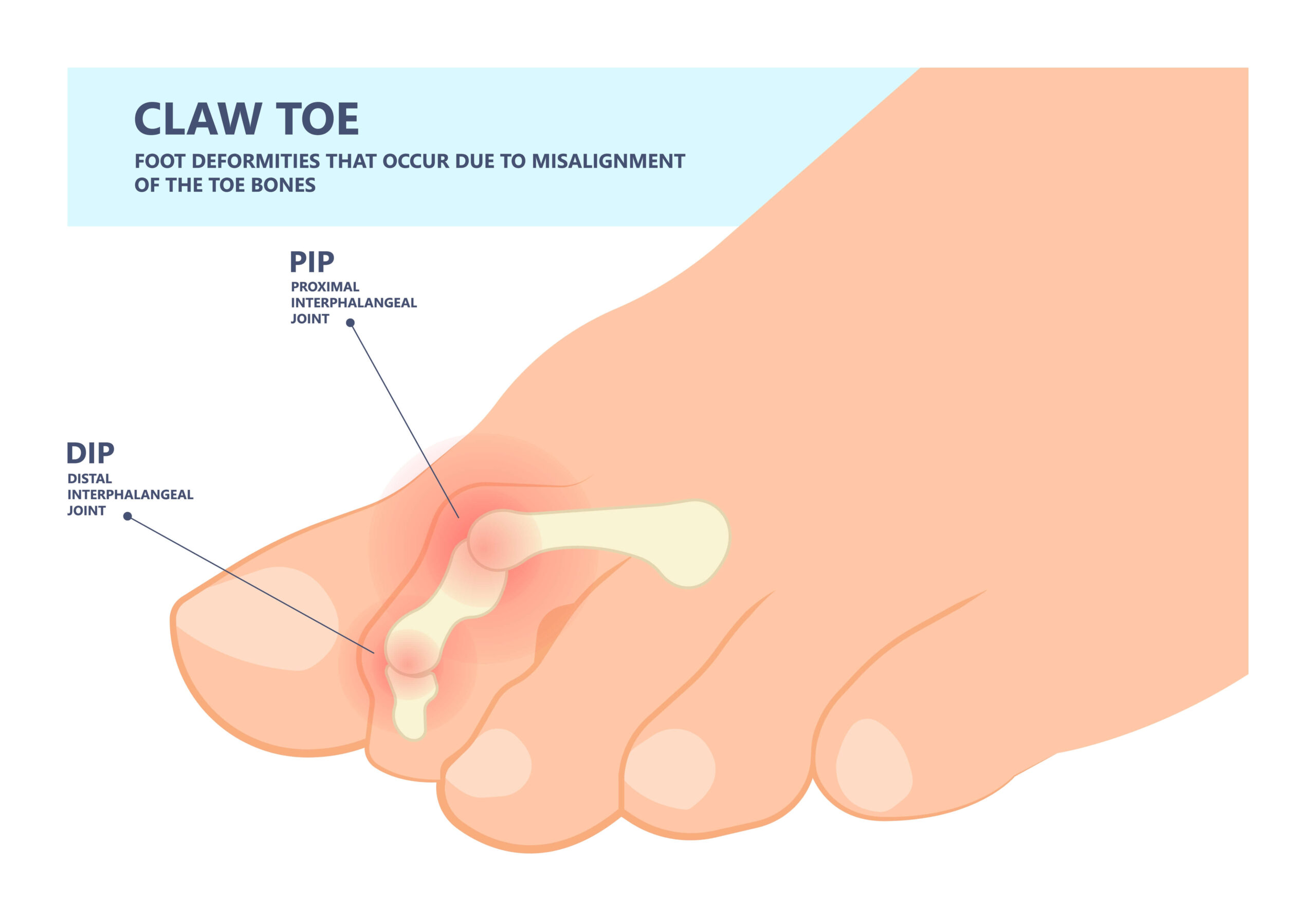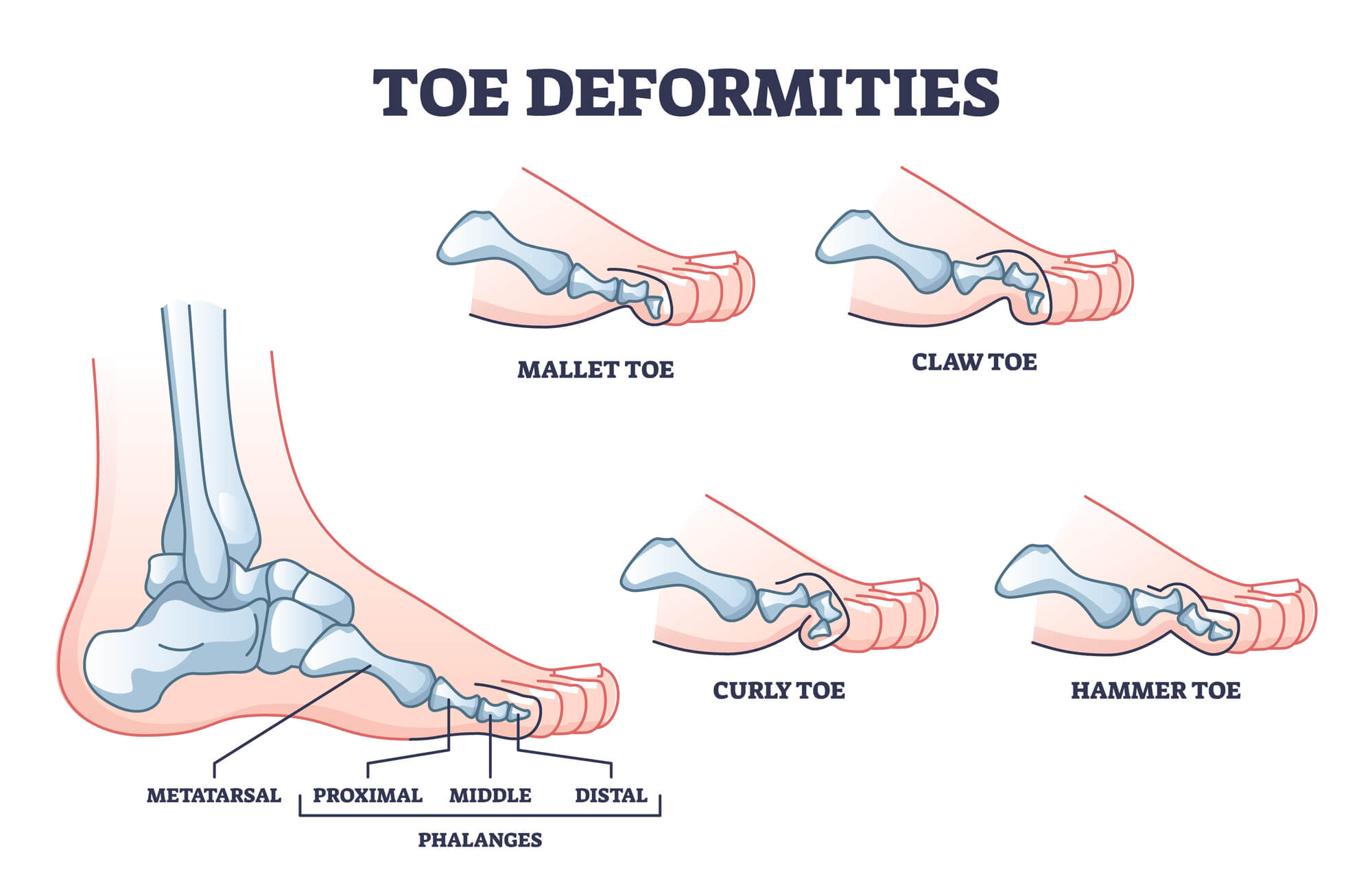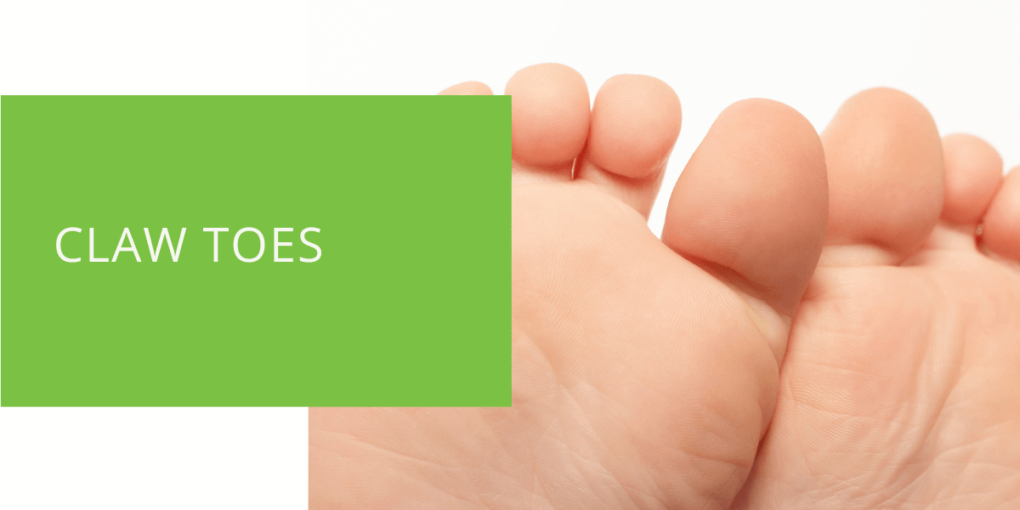Claw Toes: Causes, Symptoms & Treatment
Claw toes are a common foot deformity that can cause discomfort and embarrassment. They are caused when the toes curl under or over each other, resulting in a claw-like appearance. This article will explore the causes, symptoms, and treatment options for claw toes.
What are Claw Toes?
A claw toe is a deformity that occurs when the toes curl under or over each other, resulting in a claw-like appearance. They can occur in any toe but are most common in the second, third, and fourth toes. There are two types of claw toes: flexible and rigid. Flexible claw toes can still move at the joints, while rigid claw toes cannot move at the joints.
Types of Claw Toes
- Flexible claw toes: These can still move at the joints and can often be corrected with non-surgical treatment options.
- Rigid claw toes: These cannot move at the joints and may require surgical treatment to correct.

Causes of Claw Toes
Several factors can contribute to the development of claw toes. Some common causes include:
- Tight shoes or socks: Wearing shoes or socks that are too tight can cause the toes to become cramped and eventually curl under or over each other.
- Medical conditions: Certain conditions, such as diabetes, arthritis, and rheumatoid arthritis, can cause claw toes to develop. In addition, neurological conditions such as cerebral palsy can also cause claw toes.
Symptoms of Claw Toes
The most noticeable symptom of claw toes is the claw-like appearance of the toes. Other symptoms may include:
- Pain or discomfort when wearing shoes: Tight or poorly fitting shoes can cause pressure on the toes, leading to pain or discomfort.
- Calluses or corns on the toes: The friction caused by the toes rubbing against each other or against the inside of the shoe can lead to the development of calluses or corns.
- Difficulty moving the toes: Claw toes can cause difficulty moving the toes, leading to difficulty with activities such as tying shoelaces.

Treatment of Claw Toes
Treatment for claw toes depends on the severity of the deformity and the underlying cause. Some non-surgical treatment options include:
- Wearing properly fitting shoes: It is important to wear shoes with a wide toe box to allow for proper toe movement. Avoiding high heels can also help to prevent claw toes from worsening.
- Using splints or toe spacers: Splints or toe spacers can be worn to help straighten the toes and relieve pressure on the toes.
- Using padding: Padding can be used to alleviate pressure on the toes and prevent the development of calluses or corns.
In more severe cases, surgery may be necessary to correct claw toes. Surgical options may include:
- Tendotomy: This procedure involves cutting the tendon causing the toe to curl.
- Arthroplasty: This procedure involves removing a small piece of bone from the toe joint to straighten the toe.
Your podiatrist can determine if surgery is necessary and recommend the best course of action.

Prevention of Claw Toes
Several steps can be taken to prevent the development of claw toes. These include:
- Wear properly fitting shoes: It is important to wear shoes that fit properly and have a wide toe box to allow for proper toe movement.
- Avoid high heels: High heels can put pressure on the toes and contribute to the development of claw toes.
- Seek treatment from a podiatrist: If you are experiencing discomfort or difficulty moving your toes, it is important to seek treatment from a podiatrist. They can help diagnose your symptoms' cause and recommend the appropriate treatment.
Conclusion
Claw toes can be a painful and embarrassing deformity, but with proper treatment, they can be corrected. Wearing properly fitting shoes, using splints or padding, and seeking treatment from a podiatrist can help to prevent and treat claw toes. If you are experiencing discomfort or embarrassment due to claw toes, it is important to consult with a podiatrist to determine the best course of action. Don't let claw toes hold you back - take control of your foot health and seek treatment today.
FAQ
How do you treat clawed toes?
Treatment for claw toes depends on the severity of the deformity and the underlying cause. Non-surgical treatment options may include wearing properly fitting shoes, splints or toe spacers, and padding to alleviate pressure on the toes. In more severe cases, surgery may be necessary to correct claw toes. Surgical options may include tendotomy, which involves cutting the tendon causing the toe to curl, or arthroplasty, which involves removing a small piece of bone from the toe joint to straighten the toe.
What causes claw like toes?
Several factors, including tight shoes or socks, medical conditions such as diabetes and arthritis, and neurological conditions such as cerebral palsy, can cause claw toes.
Which nerve damage causes claw toes?
Nerve damage can cause claw toes by disrupting the normal function of the muscles and tendons in the toes. This can cause the toes to curl under or over each other, resulting in a claw-like appearance.
Is claw toe serious?
While claw toes may not be a serious medical condition, they can cause discomfort and difficulty with activities such as walking and wearing shoes. In severe cases, claw toes can develop calluses and corns and may even cause difficulty with balance. It is important to seek treatment from a podiatrist if you are experiencing discomfort or difficulty moving your toes.

